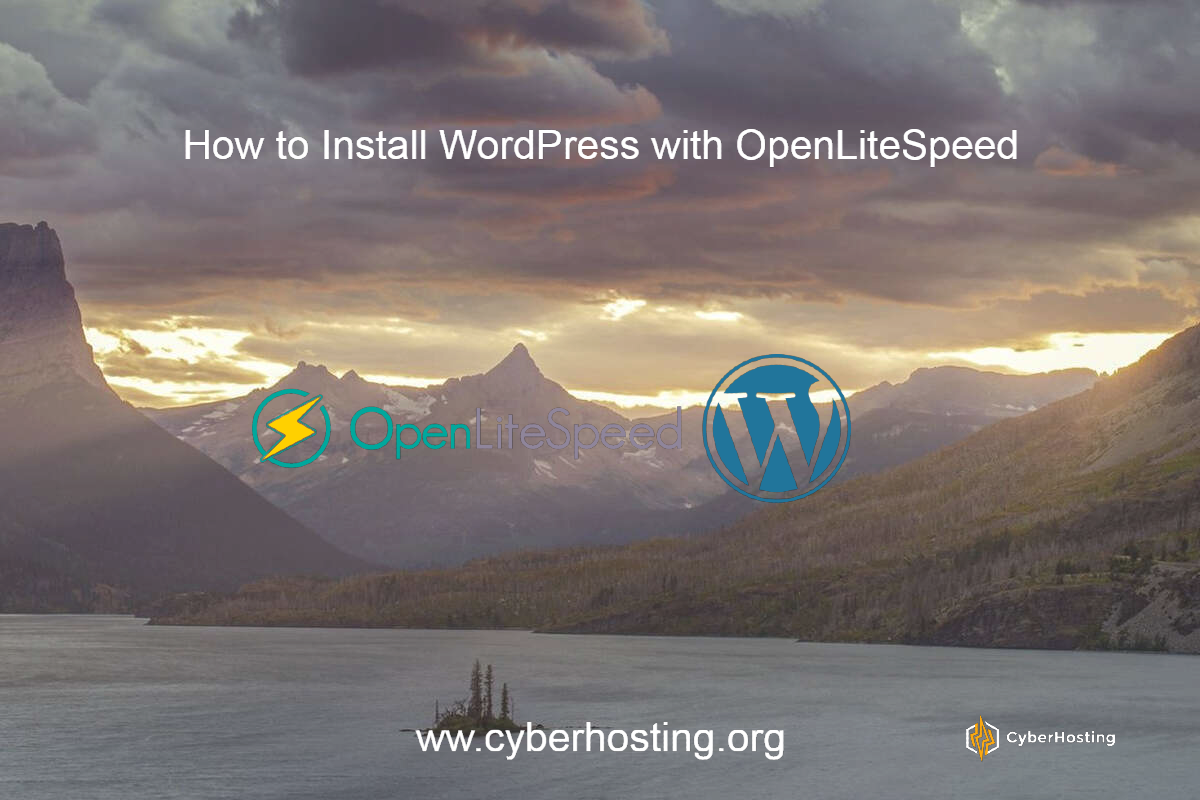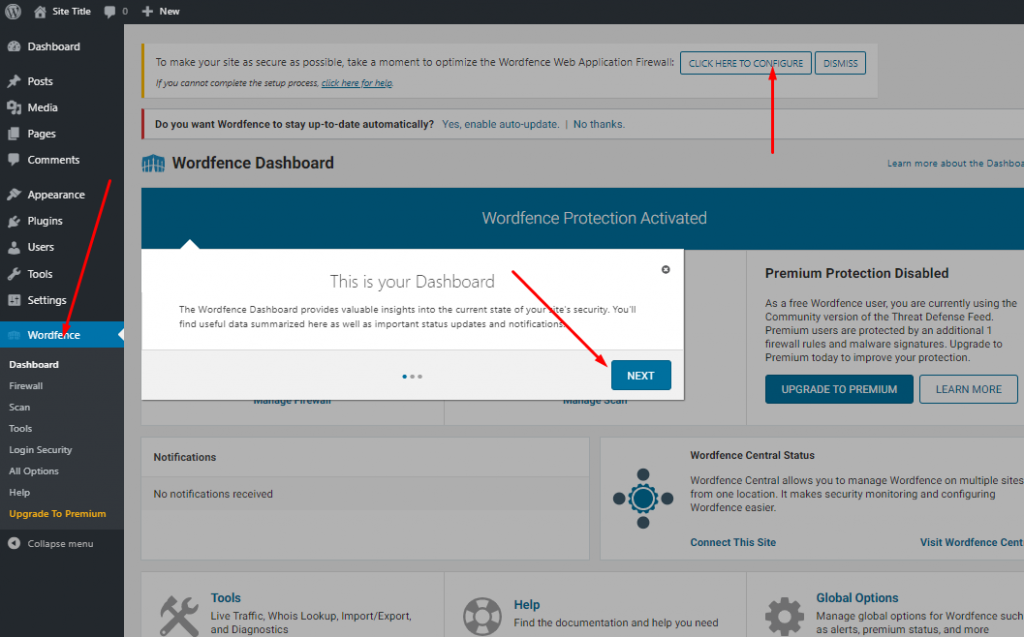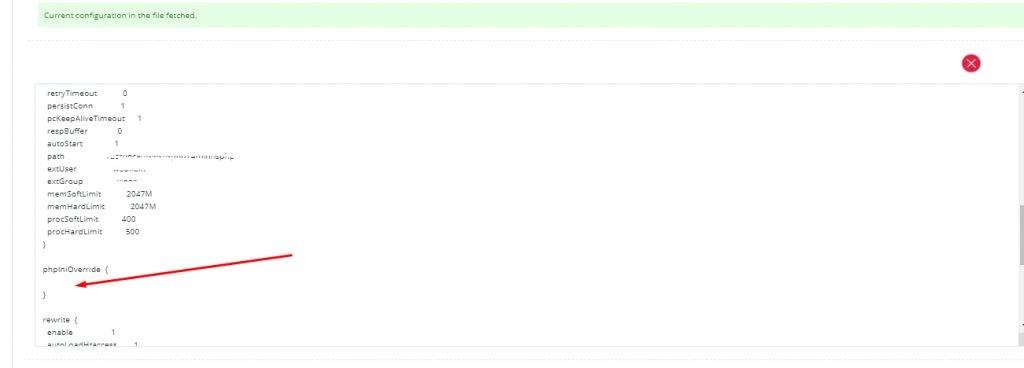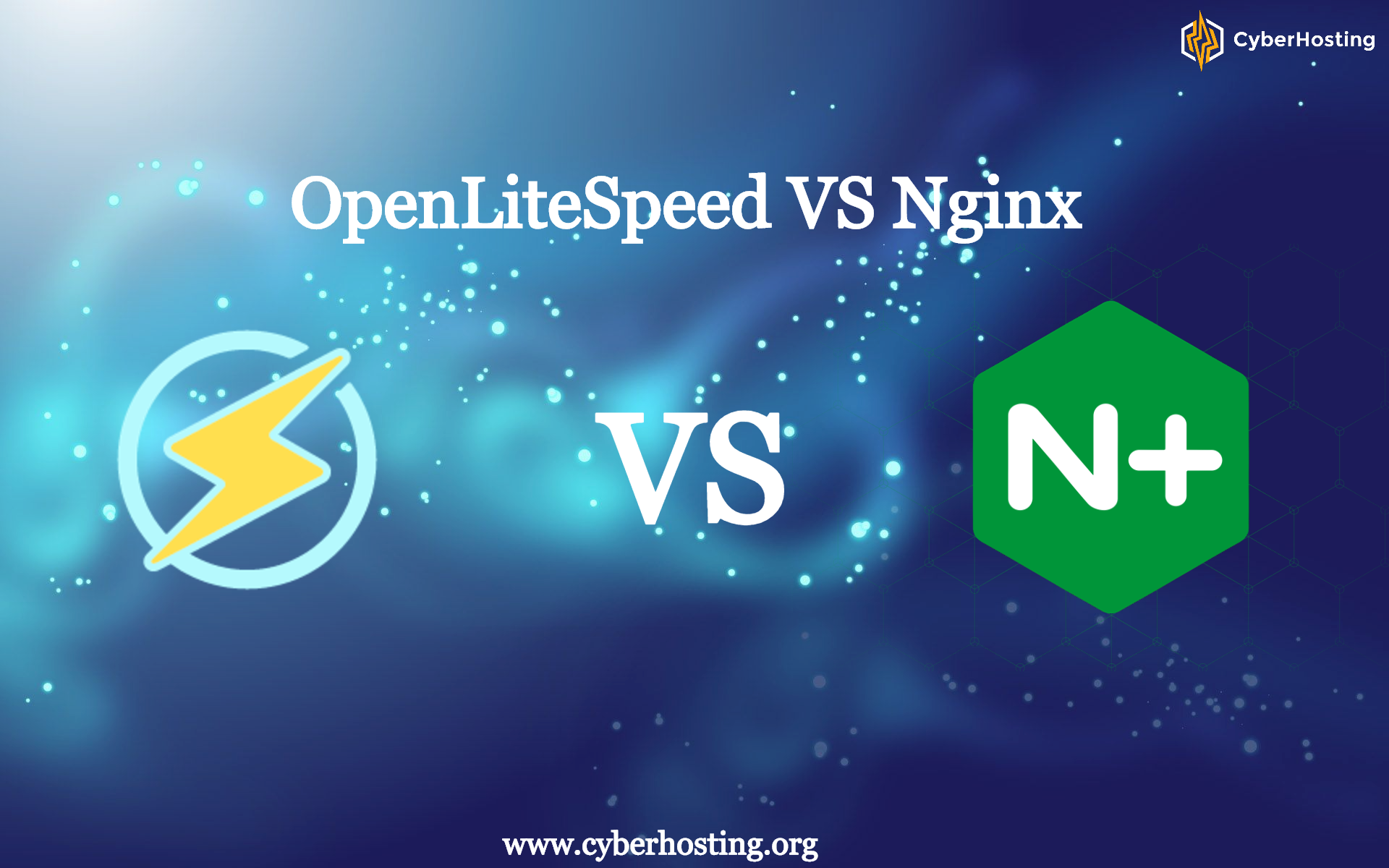How to Install WordPress with OpenLiteSpeed
Do you know How to Install WordPress with OpenLiteSpeed?
OpenLiteSpeed is a high performant web-server especially for WordPress sites because of LSCache plugin.
A great deal of people are opting for OpenLiteSpeed stack to power and speed up their WordPress site, in this article we will see how you can do exactly that.
Install OpenLiteSpeed:
First of all, we have to know how to install OpenLiteSpeed. To do so we are going to mention all the installation steps here. OpenLiteSpeed installation is very easy. Installation for different Operating systems is different but I will add here installation for Centos and Ubuntu.
Here in this article, we will install OLS from CentOs repositories. The difference in the installation process is just the commands steps and the sequence of steps remains the same throughout the process.
- You have to add the repositories in order to install OpenLiteSpeed. Here the commands to add repositories to the centos and Ubuntu.
Centos:
rpm -ivh http://rpms.litespeedtech.com/centos/litespeed-repo-1.1-1.el7.noarch.rpm
Ubuntu:
wget -O - http://rpms.litespeedtech.com/debian/enable_lst_debain_repo.sh | bash
Adding repository is the first step to install OpenLiteSpeed.
2. After adding repositories to the machine now its time to install OpenLiteSpeed. OpenLiteSpeed is just one command install. Here is the Command.
Centos:
yum install openlitespeed
Ubuntu:
apt-get install openlitespeed
By default, this command installs the latest stable version of the OLS. if you want to install any specific version then the command will be
yum install openlitespeed-x.x.x
Replace x.x.x with any version you are required like 1.2.2 or any you need to install. Once OLS has been installed successfully. You OpenLiteSpeed directory is /usr/local/lsws.
3. To start OpenLiteSpeed server use the command
/usr/local/lsws/bin/lswsctrl start
4. To stop OpenLiteSpeed server use the command
/usr/local/lsws/bin/lswsctrl stop

Configuring OpenLiteSpeed:
In order to set up WordPress on the LiteSpeed server, you have to do some configurations on your server.
For the configuration, we have to access the LiteSpeed Web Server to access the webserver. You can use the port 7080 with your IP address. You can reach the webserver from the following link https://<your_server_ip>:7080. Once you reach this you can see this screen

Provide credentials to log in to the webserver. Usually username=”admin” and if you don’t know the password you can change it by running this simple command
/usr/local/lsws/admin/misc/admpass.sh
After providing the details you can see the dashboard of LightSpeed Web Server.

Now it time to do some configurations on the webserver. First of all, from this OpenLiteSpeed dashboard find Server configuration on the menu.

Go to the External App section present in the Server configuration. And you see LightSpeed SAPI App click Edit.

After getting to the next page by clicking the Edit button. Now you have to do some configuration according to the PHP version that you have. This is important because OpenLiteSpeed installation won’t be able to correctly execute PHP Scripts. So we have 7.3 We will do configurations according to our version. By default there is lsphp but we have to make it lsphp73. 73 is for my PHP version you can do it for your own version.
We have to correct three things Name, Address and Command according to our version.

Once you edit these go and save these settings.
Now its time to edits some Virtual Hosts settings. To do so go to the Virtual Hosts section from the left menu.

You can see an Example Virtual host on the screen view this for some configurations.

In the Example virtual Host go to the General Tab. And click the edit button. These are some Configurations that are important for WordPress.

In order to install and setup WordPress, we are going to create a directory WordPress in the next steps so in Document Root we add this. OpenLiteSpeed looks at the contents of the Document Root field for content to serve.

Once you done click save.
In LightSpeed by default, there is only index.html file as index file but for WordPress, we will need index.php also because its core file for WordPress and This will allow the main logic of WordPress to function correctly.
To do so in General tab go to the index files and click to the edit.

Add the index.php file also in index file with index.html. and save

Now we have to do some setting on rewrite rules for this go to the Rewrite tab in the Virtual Host window.

In Rewrite Enable Rewrite and Auto Load from .htaccess. Make these option yes. And click to save.

Now we are going to take a look on some security options. As OprnLiteSpeed installation includes some Password protected areas for the authentication features. And we know that WordPress uses its own authentication mechanisms and we will not going to use file-based authentication by Openlitespeed. So we have to remove these so WordPress works properly on its own.
To do so got to the Security tab in the Virtual Hosts option.

At the end of this screen, you can see a Realm List which has a SampleProtectedArea. Click on the Delete button to remove it.

It will ask you for confirmation click the Delete button and go on.
Now you have to delete the protectd from context. Go to the Context tab. Here you find /protected/ click delete and delete it.

Once all done now its time for Graceful Restart in order to configure all changes we made. To do so click the restart button on the top of screen.

Now your OpenLiteSpeed is fully configured and good to go.
Installing MySQL
As we know that WordPress uses MySQL. WordPress needs MySQL to store and manage its data. So in order to install WordPress On OpenLiteSpeed, we must have the MySQL installed on the server. Go to the terminal and check the installation of MySQL to check this type of command
mysql -v
This will show you the version of MySQL. If MySQL is not installed there then it will give you MySQL command not found. You have to follow the process.
- Download and add the repository
wget http://repo.mysql.com/mysql-community-release-el7-5.noarch.rpm sudo rpm -ivh mysql-community-release-el7-5.noarch.rpm
2. Install MySQL as usual.
sudo yum install mysql-server3. Start the service
systemctl start mysqldNow you have to log in to the MySQL root account. to login to the root access type the command:
sudo mysql

Now we are going to create a database using this command:
CREATE DATABASE webssite DEFAULT CHARACTER SET utf8 COLLATE utf8_unicode_ci;
The name of the database is whatever you want to use but here we used “website”. Now we have to create a user how has all rights for this database. You can specify a username and password according to your choice.
GRANT ALL PRIVILEGES ON webssite.* TO 'user'@'localhost' IDENTIFIED BY 'password';
Now FLUSH PRIVILEGES which tells the server to reload the grant tables and put your new changes.
FLUSH PRIVILEGES;
Now exit from mysql.
exit;

Installing PHP Extensions:
We need to install different PHP extensions and modules in order to run and fulfill the required result for our WordPress Site. Here we mention some of the modules and will install them for PHP 7.3 Installation is the same for every PHP version jus the change of version in command.
Centos:
yum install lsphp73-common lsphp73-curl lsphp73-imagick lsphp73-imap lsphp73-json lsphp73-memcached lsphp73-mysql lsphp73-opcache lsphp73-redis
Ubuntu:
apt install lsphp73-common lsphp73-curl lsphp73-imagick lsphp73-imap lsphp73-json lsphp73-memcached lsphp73-mysql lsphp73-opcache lsphp73-redis
LiteSpeed Repository installs PHP unber /usr/local/lsws/lsphpxx
These are some extensions like redis, mysql, imagick, etc you can also install any other if you wan to.
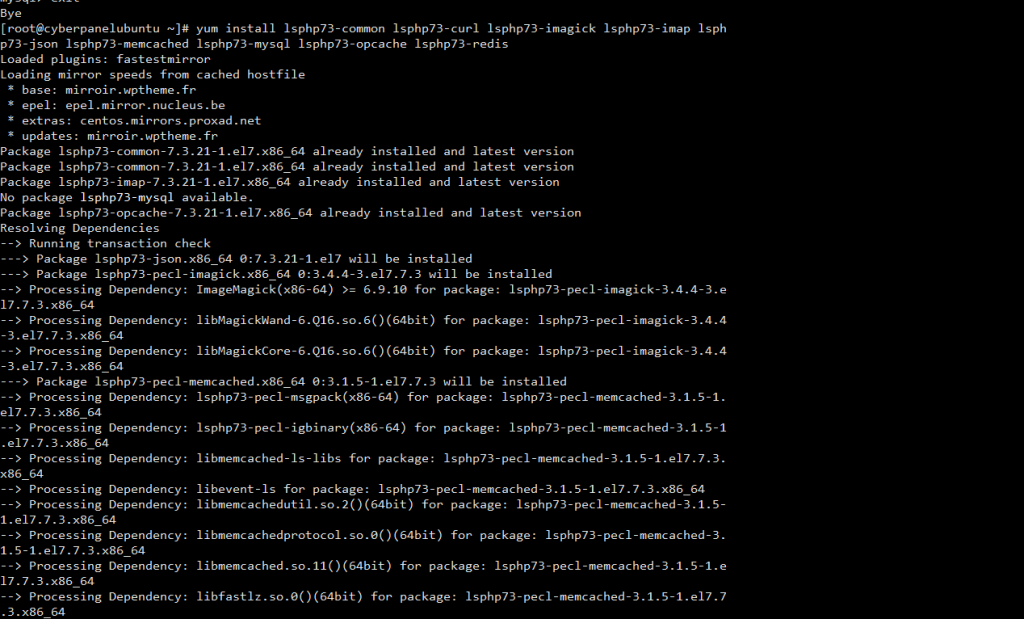
Installing and Configuring WordPress:
Now we have to discuss the installation and configuration process of WordPress with the OpenLiteSpeed. We are done with Server configuration and now we are on the installation. You can download the latest version of WordPress from the there official site. You can download WordPress and any directory. I created a directory “mywebsite“. Create the directory using the following command:
mkdir mywebsite

Go to that specific directory that you created to download WordPress. Use the command cd “your_directory”.
Now its time to download WordPress. You can do it using a command and the command is stated here:
curl -O https://wordpress.org/latest.tar.gz
If you want to download any specific version. Go and get the proper link for that proper version. Now extract the compressed file that you downloaded.
tar xzvf latest.tar.gz
Now your directory look like this:

Now for the OpenLiteSpeed we have to create a file before going to further process. OpenLiteSpeed Support .htaccess files. this is so important for us to create this file to go for the next steps because WordPress managed and create permalinks using this file. for this purpose, we will use touch command. Here is the whole command to create the .htaccess.
touch /root/mywebsite/wordpress/.htaccess
You can add the path where your WordPress is on the server.
One more important file for the WordPress Installation is the wp-config.php file. All the configuration of WordPress depends upon this file. Whenever we download this file from there official website this there will be a sample file like wp-config-sample.php. for this setup, we are going to copy that sample file into the wp-config .php file to use it. And will configure it. We are going to do it using a command you can do to with any other method too.
cp /root/mywebsite/wordpress/wp-config-sample.php /root/mywebsite/wordpress/wp-config.php
You can see we have .htaccess and also wp-config.php on our server now.

For the safe side, we are going to create an upgraded directory so WordPress will not run into permission issues while updating. A very simple command is used for this:
mkdir /root/mywebsite/wordpress/wp-content/upgrade
Always check you changes that you made. Now its time to move the WordPress content to the place from where we can access this. As you remember that we added the path for our WordPress site in the OpenLiteSpeed in the virtual host-> Example -> root document.
We have to move this in /usr/local/lsws/Example/html/mywordpresssite
Now here I mention the command to move my WordPress content to that specific.
cp -a /root/mywebsite/wordpress/. /usr/local/lsws/Example/html/mywordpresssite
This is the command for specific my setup. And also note the “.” in the command. This will copy all the hidden files also.
Now its time to do some critical configuration for your WordPress to be working. We have to do some permission configurations and wp-config.php configuration the most important. First of all, we will go for the permissions of files. We are going to set nobody user and nogroup to the group. OpenLiteSpeed web server runs these as default and gives the ability to read and write these.
Use these command to do so. incase of centos this one will work:
sudo chown -R nobody:nobody /usr/local/lsws/Example/html/mywordpresssite
In case of ubuntu this will work
sudo chown -R nobody:nobody /usr/local/lsws/Example/html/mywordpresssite
Now in the next step, we have to find two more permission sets. We have to specify the permissions for files and directories. First, we are going to set permission for the directories for that we will use
sudo find /usr/local/lsws/Example/html/mywordpresssite/ -type d -exec chmod 750 {} \;
Set permissions to 750 And for files permissons we use:
sudo find /usr/local/lsws/Example/html/mywordpresssite/ -type f -exec chmod 640 {} \;
These permissions are required and suitable for the process and the proper functionalities properly.
Now we all done with the permissions part now we have to set set up wp-config.php. We copied the content of the sample file in the wp-config file. So we have to add some real value in order to word the wp-config properly. In the default file, you can see that they ask you for real value now we have to generate these values.

We can do so from the official API of WordPress for these use this command:
curl -s https://api.wordpress.org/secret-key/1.1/salt/
Once you run this command you will receive value like these. Copy the value from the terminal and replace these values in the wp-config.php file I am going to do this from the terminal using vi editors.
You can use this command to do so on your end:
vi /usr/local/lsws/Example/html/mywordpresssite/wp-config.php
this one is default one and have to replace with real values.

After updating with real values it look like.

The configurations for keys are now set up and now we have to set up database configurations in the wp-config.php file.
You remember the Database you created and the user for that. Now we have to add these in this file.

Now in this default configuration now we will add out real values in it.

All done for the wp setup. Its time to open and launch the final site.
Install WordPress with OpenLiteSpeed
Setup WordPress
Now we will go to the last WordPress Setup. First of all, you have to know how you can access your WordPress to setup. Be careful in this process. You can open your WordPress installation through your IP or server domain but check the firewall may in my case I was able to open the site on port 8088
http://<ip_address>:8088

Here the process is started for installation. You have to select your language and click Continue.
Here you have to provide the required information. Username, Password, Site tile, and Email after providing all these clicks to the Install WordPress button.
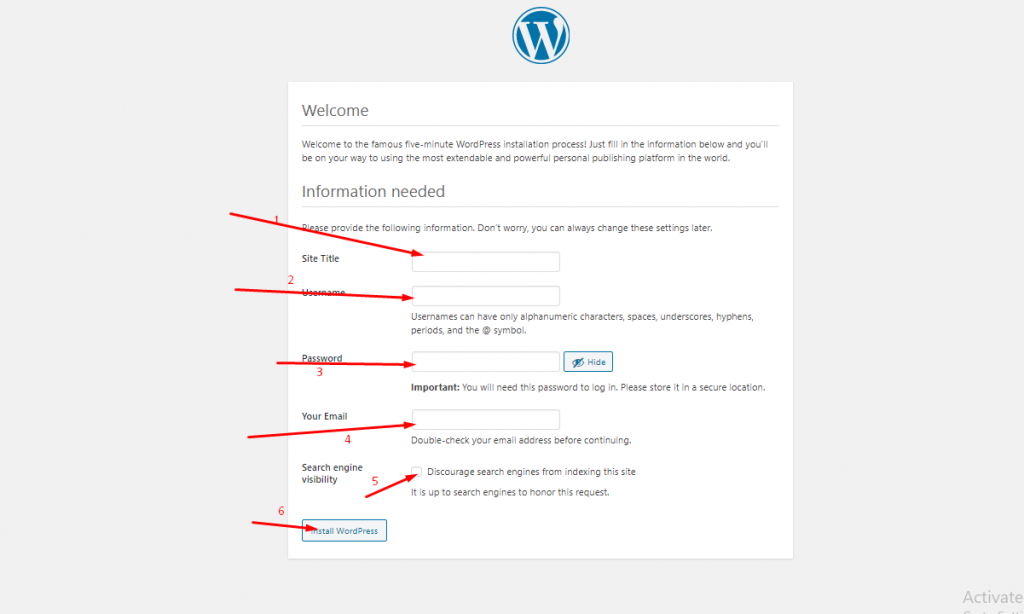
You will receive the confirmation screen for the process.

Click to the login button and provide the detail to login.

After login, you can visit the admin dashboard and do whatever you want to.
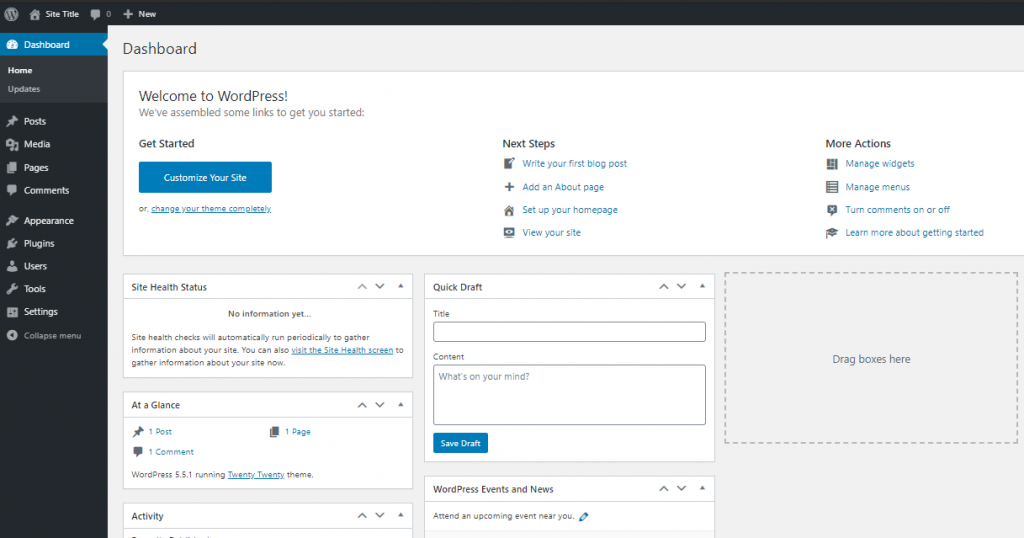
Now you can do any operation regarding your site from here. Add any plugin, posting, and anything you want to do.
Benchmark of WordPress Site with LS Cache:
At the last, we are also going to check the benchmark for the WordPress Site with and without ls cache. In this way, we can evaluate how LS Cache effects the site. First, we will see the results without LS Cache and then we enable LS Cache and see the results. we are going to use h2load for performing benchmarks. You can visit here to check how to install it.
For the benchmark, we chose a fixed value which we are going to use after and before the LS Cache installation.
h2load -n10000 -c100 -m10 https://mydomain.com/
We are going to use this command that means we have three parameters here:
-nThe number of total requests. we are going with 10000
-cThe number of concurrent clients. we are going with 100
-mThe max concurrent streams to issue per client. we are going with 10
Benchmark without enabling LS Cache
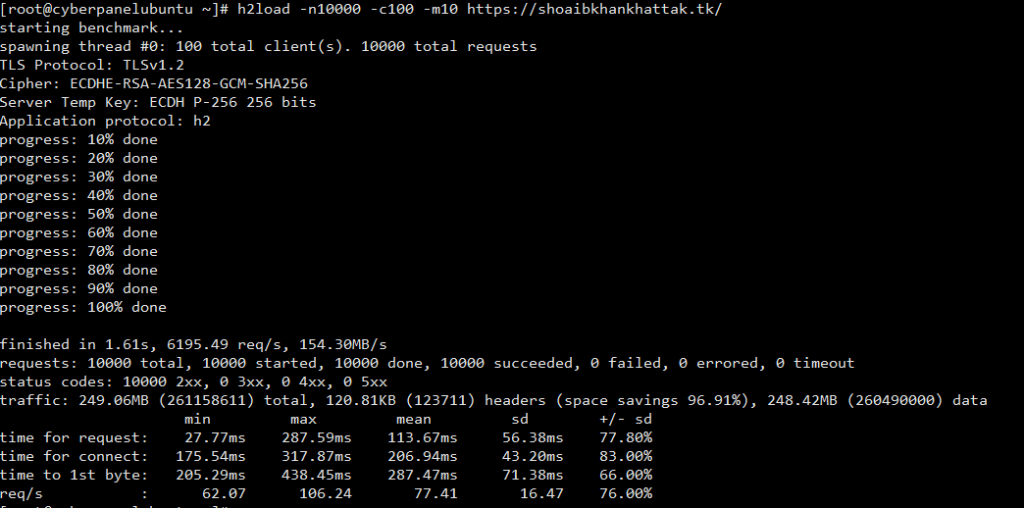
starting benchmark…
spawning thread #0: 100 total client(s). 10000 total requests
TLS Protocol: TLSv1.2
Cipher: ECDHE-RSA-AES128-GCM-SHA256
Server Temp Key: ECDH P-256 256 bits
Application protocol: h2
progress: 10% done
progress: 20% done
progress: 30% done
progress: 40% done
progress: 50% done
progress: 60% done
progress: 70% done
progress: 80% done
progress: 90% done
progress: 100% done
finished in 1.61s, 6195.49 req/s, 154.30MB/s
requests: 10000 total, 10000 started, 10000 done, 10000 succeeded, 0 failed, 0 errored, 0 timeout
status codes: 10000 2xx, 0 3xx, 0 4xx, 0 5xx
traffic: 249.06MB (261158611) total, 120.81KB (123711) headers (space savings 96.91%), 248.42MB (260490000) data
min max mean sd +/- sd
time for request: 27.77ms 287.59ms 113.67ms 56.38ms 77.80%
time for connect: 175.54ms 317.87ms 206.94ms 43.20ms 83.00%
time to 1st byte: 205.29ms 438.45ms 287.47ms 71.38ms 66.00%
req/s : 62.07 106.24 77.41 16.47 76.00%
Benchmark after enabling LS Cache

[root@cyberpanelubuntu ~]# h2load -n10000 -c100 -m10 https://shoaibkhankhattak.tk/
starting benchmark…
spawning thread #0: 100 total client(s). 10000 total requests
TLS Protocol: TLSv1.2
Cipher: ECDHE-RSA-AES128-GCM-SHA256
Server Temp Key: ECDH P-256 256 bits
Application protocol: h2
progress: 10% done
progress: 20% done
progress: 30% done
progress: 40% done
progress: 50% done
progress: 60% done
progress: 70% done
progress: 80% done
progress: 90% done
progress: 100% done
finished in 1.40s, 7117.72 req/s, 177.27MB/s requests: 10000 total, 10000 started, 10000 done, 10000 succeeded, 0 failed, 0 errored, 0 timeout status codes: 10000 2xx, 0 3xx, 0 4xx, 0 5xx traffic: 249.06MB (261156355) total, 118.61KB (121455) headers (space savings 96.97%), 248.42MB (260490000) data min max mean sd +/- sd time for request: 22.52ms 190.04ms 94.97ms 32.20ms 66.87% time for connect: 146.85ms 303.13ms 194.98ms 47.78ms 77.00% time to 1st byte: 192.92ms 410.21ms 272.01ms 68.73ms 67.00% req/s : 71.36 132.70 91.69 21.77 77.00%
Now you can see the difference between the both results.
Read More: HOW TO CHANGE TIMEZONE ON LINUX SERVER


